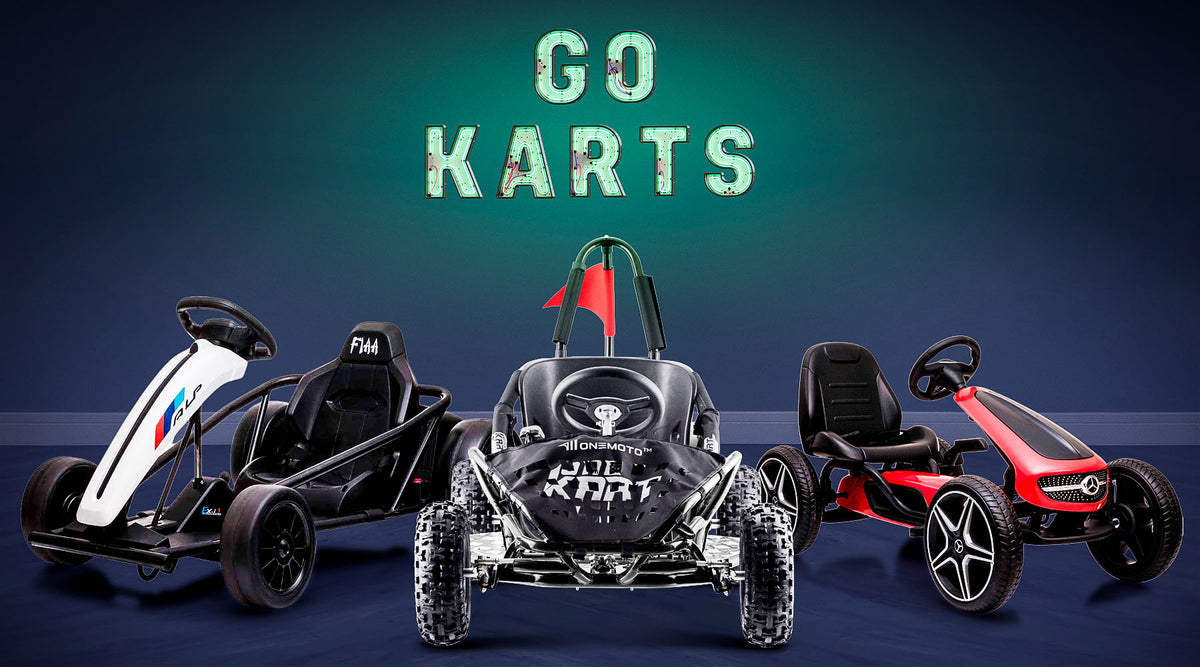
Ever watched a high-octane Formula 1 race and wondered how those lightning-fast pit stops translate to the fast-paced world of go-kart racing? You’re not alone. Many karting fans and racers ponder the role of pit stops in this adrenaline-fueled sport.
Picture this: your kart’s fuel is running low, or your tyres are showing signs of wear midway through a heated race. Do you keep pushing, or head into the pits?
The answer depends on the race type. Let's dive into the reality of go-kart racing and discover whether pit stops are part of the strategy—or simply left to the big leagues.
So, Do Go-Kart Races Have Pit Stops?
Typically, no—especially in short sprint races lasting around 10-12 laps. Pit stops are not standard due to the short duration and the loss of time they would cause. However, in endurance go-kart racing, pit stops are essential for tyre changes, refuelling, and mechanical checks. So whether pit stops are involved depends entirely on the race format.
Related: Why Is Go Karting So Tiring?
Understanding Go-Kart Racing
Go-karting is a global motorsport phenomenon. From weekend warriors to professional drivers, it delivers thrills, strategy, and speed—all packed into a small but mighty racing machine.
But it’s not all just zipping around corners. Go-karting also involves understanding tyre wear, fuel consumption, and mechanical maintenance.
Related: 12 Tips On How To Drive A Go Kart For The First Time
A Quick History of Go-Kart Racing
Born in the U.S. during the 1950s, go-karting started as a fun and accessible way to experience racing thrills. Back then, pit stops weren’t even considered—they simply weren’t needed.
But as the sport matured, longer races emerged—endurance events that required more than just speed. Fuel levels, tyre grip, and mechanical reliability all became critical—ushering pit stops into the karting world.
Related: What Are the Best Go-Kart Gear Ratios?
Pit Stops in Go-Kart Racing: When and Why?
Endurance Races = Pit Stops
In endurance karting—where races last 1-6 hours—pit stops are vital. Drivers stop to change tyres, refuel, or swap out drivers. These stops can make or break a race.
Sprint Races = No Pit Stops
Short races? Forget pit stops. Every second counts in 10-lap sprints. Pulling in for maintenance would be like handing your rivals the win.
Mechanical Issues & Emergency Stops
If your kart hits a snag mid-race—like a flat tyre or engine misfire—a pit stop becomes a necessity. Safety comes first, and no one wants to risk a crash.
Learning from the Pits
Even though rare, pit stops are valuable teaching tools. From teamwork to strategy and kart mechanics, they sharpen a racer's skill set both on and off the track.
Understanding kart mechanics and making fast decisions during pit stops is how racers level up.

Safety First in Go-Kart Pits
When pit stops happen in go-karting, safety is non-negotiable. Pit lanes are structured and regulated, with strict rules on conduct, similar to professional motorsport. Every move is planned to keep both drivers and crew protected.
In Summary
Go-karting delivers all the speed, thrills, and strategy of big-league racing—just in a smaller, tighter package.
For most races, pit stops are unnecessary. But in endurance formats or when mechanical issues arise, they become essential.
Beyond strategy, pit stops also teach crucial racing lessons: coordination, quick thinking, and the value of a well-oiled team.
So next time you're racing or watching from the sidelines, remember—there’s more to pit stops than meets the eye. They might just be the secret sauce to mastering the track.
FAQs
How fast can a racing go-kart go?
Competitive go-karts can reach speeds of 60 mph (96 km/h), while recreational karts usually cap at 40 mph (64 km/h) for safety.
Is a licence required for go-kart racing?
No licence is needed for casual karting, but professional racing often requires a karting licence depending on the league and country.
Can children take part in go-kart racing?
Absolutely! Many tracks offer junior karts and beginner-friendly programs, though age and height restrictions may apply.
What’s the difference between 2-stroke and 4-stroke karts?
2-stroke karts are faster and suited for racing; 4-stroke karts are more durable and commonly used for leisure karting.








Share:
Differences Between Petrol And Electric Ride Ons in 2025
Are Go Karts Street Legal In 2025?